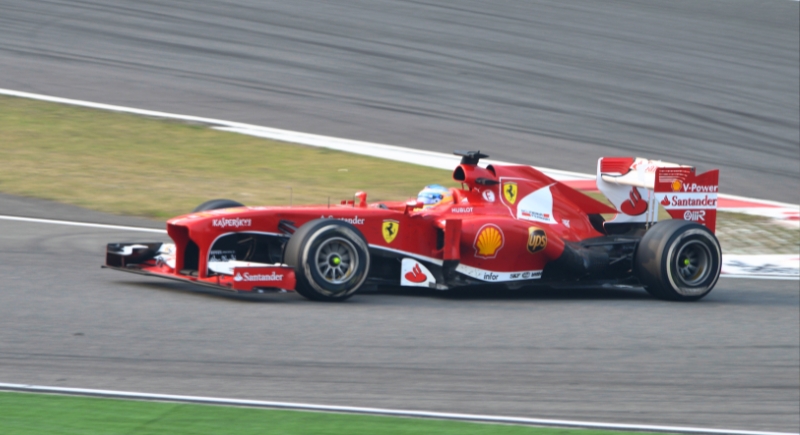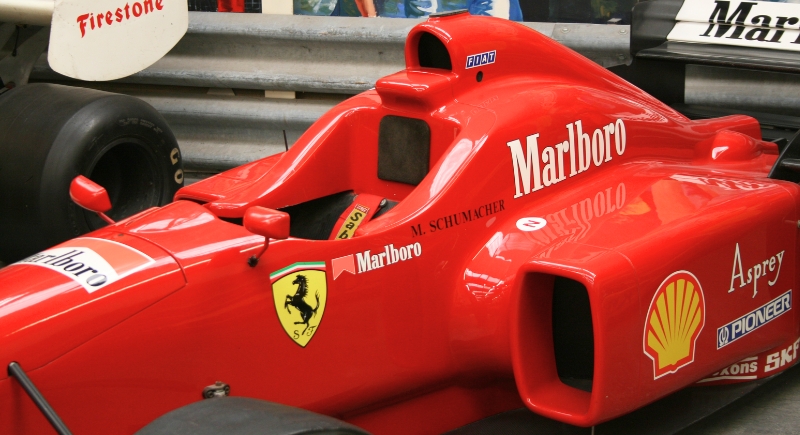5 Skills F1 Drivers and Fighter Pilots Have in Common
F1 drivers and fighter pilots live by very similar rules. They must perform flawlessly or pay the price. Both sit strapped into machines that move faster than most people can comprehend, surrounded by switches, sensors, and data that demand perfect coordination. The conditions may differ, with one facing asphalt and the other open sky, but the precision, physical strain, and mental control are strikingly similar.
When an F1 driver grips the wheel or a fighter pilot steadies their jet, they push their limits in speed, strength, and self-control.
Rapid Reflexes And Anticipatory Thinking

Image via Wikimedia Commons/emperornie
Reaction time separates survival from disaster in both cockpits. An F1 driver like Fernando Alonso reacts to race lights in about 0.16 seconds, while fighter pilots often respond to radar or threat signals in the same range.
At these speeds, thought and movement become one. Both train their brains to predict motion, not just react to it. This results in anticipatory awareness, the ability to sense what is about to happen before it actually does.
The reflex control doesn’t come naturally. Drivers run visual-response drills, hand-eye coordination exercises, and simulation starts. Pilots rehearse threat response patterns until they’re automatic. When it’s time for action, their bodies are already one step ahead of their minds.
Physical Endurance And G-Force Conditioning
Both athletes face forces that bend the limits of the human body. F1 drivers endure up to six times gravity while cornering, and fighter pilots can hit nine g’s during combat turns. At that intensity, blood drains from the brain, and limbs grow heavy. Staying conscious takes years of targeted training.
Drivers build their necks, cores, and cardiovascular systems to resist the strain, while pilots perform anti-G maneuvers and leg contractions to keep blood circulating. Even hydration becomes a performance skill because cockpit temperatures can exceed 120°F, and a two-hour F1 race can lead to a three percent loss in body weight from sweat. Keeping steady through that demands endurance.
Cognitive Control And Split-Second Decision-Making

Image via Wikimedia Commons/U.S. Air Force photo Staff Sgt. Christopher Boitz
Both F1 drivers and fighter pilots face a flood of visual, auditory, and tactile data every second. They read dozens of dials, interpret feedback from engineers or ground control, and make tactical calls instantly. There’s no time to think.
Research on Royal Air Force pilots shows their brains adapt for higher precision under stress. F1 drivers develop similar neural pathways that let them focus on strategy, tire management, and positioning while racing at over 180 miles per hour. Such multitasking is a trained skill developed through endless mental drills.
Emotional Stability And Mental Resilience
No one thrives under pressure without composure. F1 drivers and fighter pilots master emotional regulation like they master machinery. Their pulse might hit 180 beats per minute, but their decisions remain steady. Fear or frustration has no space in the cockpit. They use breathing control, visualization, and mindfulness to stay calm.
When something goes wrong, they recover in seconds, whether a near miss, system failure, or a lock-up at 200 miles per hour. Their composure relies on discipline and mental control that allow them to think clearly when everything else is on the edge.
Human-Machine Synchronization

Image via Wikimedia Commons/Glen Bowman
In both fields, performance depends on how seamlessly human and machine move as one. Each cockpit is custom-built to its operator. Fighter jets are calibrated to the pilot’s height, posture, and eye level, while every F1 driver sits in a seat molded to their exact body shape, with pedal and wheel adjustments down to the millimeter.
This precision fit allows their movements to be instinctive. Every adjustment, whether a micro turn of the wheel or a slight pressure on the rudder, comes from hours of simulation, feedback, and trust. The connection becomes second nature as the machine starts to feel like an extension of the body.